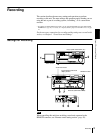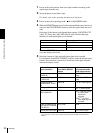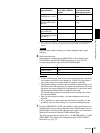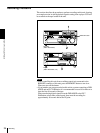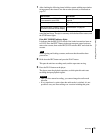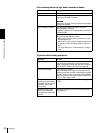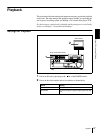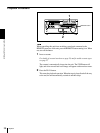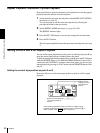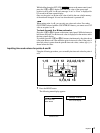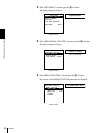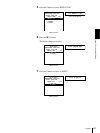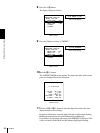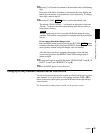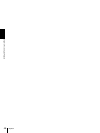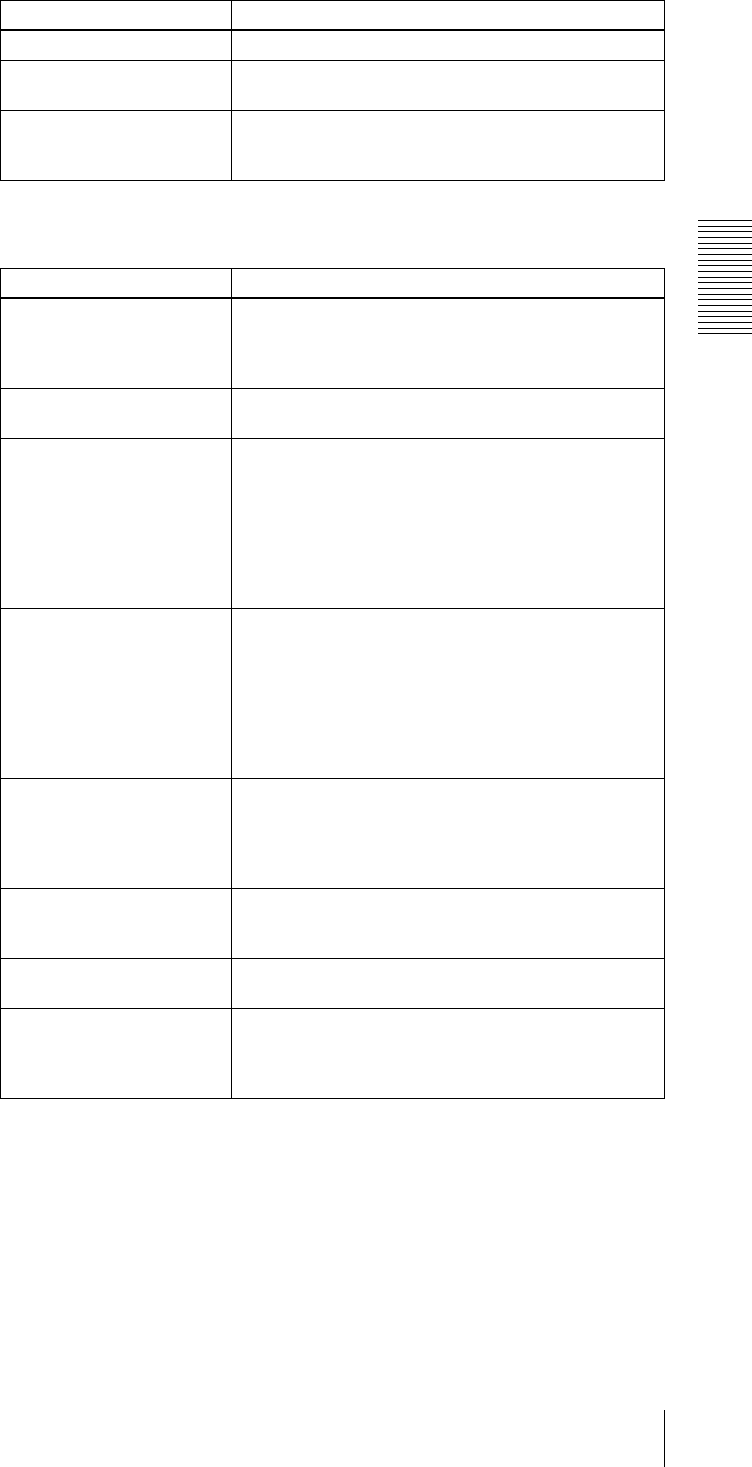
39
Playback
Chapter 2 Recording and Playback
If the following indicators light when a cassette is loaded
To perform the following operations
Indicator It means:
Cassette memory indicator The loaded cassette contains a cassette memory.
ClipLink indicator There is ClipLink log data stored in the cassette
memory on the loaded cassette.
NOT EDITABLE indicator The tape was recorded in the DV format, or a
DVCPRO tape is inserted.
You cannot use it as a recording tape for editing.
Operation Do this:
Stop playback. Press the STOP button.
The unit enters stop mode, and will automatically
switch to standby off mode after the time set with the
STOP TIMER menu item
(see page 68)
.
Adjust the audio playback
level.
Use the audio level control on the monitor.
Play back in shuttle mode
while monitoring the video.
Press the SEARCH button or search dial to light the
SHUTTLE indicator in the display section, then rotate
the search dial.
Playback is carried out at the speed determined by
the angular position of the search dial.
The maximum speed for shuttle playback can be
changed using the SHUTTLE menu item
(see page
63)
.
Play back in jog mode while
monitoring the video.
Press the SEARCH button or search dial to light the
JOG indicator in the display section, then rotate the
search dial.
Playback is carried out at the speed according to the
speed of the search dial rotation. The playback
speed range is ±1 times normal speed by factory
default.
The search dial has no detents.
Inhibit the unit from
outputting text information
(time data, operation mode
indications, etc.) to the
video monitor.
Set the CHARA. DISPLAY menu item
(see page 65)
to OFF.
Remove the cassette. Press the EJECT button.
If a CNT value is shown on the time counter display,
the CNT value is reset.
Disable the automatic
rewind function.
Set the AUTO REW menu item
(see page 64)
to
DISABLE.
Change the time period
before the unit switches
from stop mode to standby
off mode.
Change the setting of the STOP TIMER menu item
(see page 68)
.



